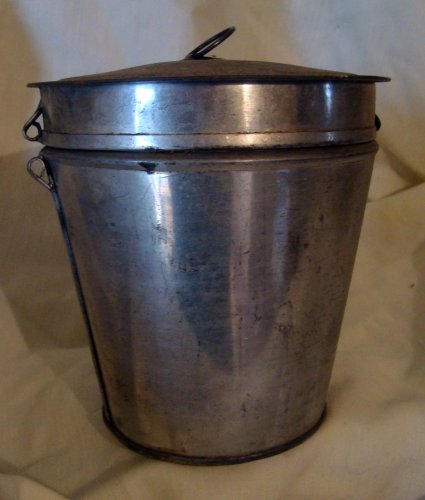This is a steamer mold. It's made of tin, has a tight-fitting, slightly domed lid, and holds about a quart. The two small rings you see on the left of the steamer were intended for wire or stirng, which could be threaded through them and tied to keep the lid on while the contents cooked.
The mold pictured belonged to my great-grandmother and was handmade by a local tinsmith in Homestead PA when she lived there in the early 1900's. Unlike later factory-made molds that were stamped and assembled, this one has a soldered seam on one side that runs from the loop at the rim to the base.
Molds like this were once common in American kitchens. Steamed puddings were popular cold-weather desserts - they were rich, dense and filling, and the long steaming process helped heat the kitchen. Tastes have changed and we rarely have steamed puddings any more. In my family, the tradition survives with our annual plum pudding at Christmas time. My mother has always made a plum pudding for the family yuletide table, just as her mother and her mother's mother before. We don't use my great-grandmother's steamer mold, though - even though the tin's plating is still almost as bright as the day she bought it from the tinsmith almost a hundred years ago, I'm almost certain that the solder is lead-based and I'd rather not use it for food.
.


Interesting. I like the sounds of 'steamed pudding'-not out of a lead object though! I'm with your Mom on that one...
ReplyDeleteI think steamed puddings are better in theory than on the table.
ReplyDeleteLove your blog — and so happy to see that the bresaola is coming along so well...